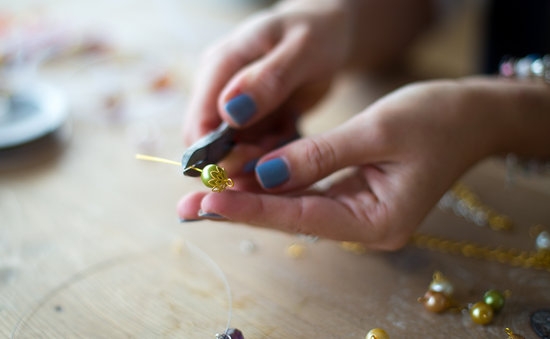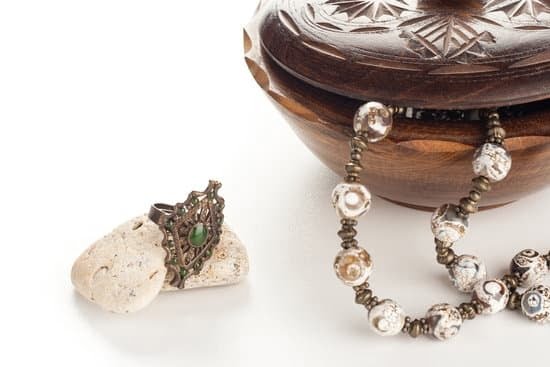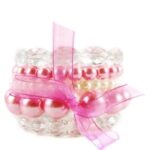Cleaning jewelry is essential for maintaining its shine and value, and an ultrasonic cleaner is a highly effective tool for achieving professional-quality results. Regularly cleaning your jewelry helps remove dirt, oils, and other residue that can dull its appearance over time. By introducing the ultrasonic cleaner as a superior cleaning method, this article will provide readers with step-by-step instructions on how to effectively clean different types of jewelry in an ultrasonic cleaner.
Jewelry holds both sentimental and monetary value for many individuals, making it crucial to keep it looking its best. Over time, jewelry accumulates dirt, oils from the skin, and residue from everyday wear. This buildup can lead to a loss of sparkle and brilliance. To prevent this, regular cleaning is necessary. An ultrasonic cleaner utilizes high-frequency sound waves to create millions of tiny bubbles that gently scrub away dirt and grime without damaging the delicate surface of the jewelry.
While traditional cleaning methods like wiping with a cloth or soaking in liquid solutions may suffice for basic maintenance, they often fail to thoroughly clean every nook and cranny of intricately designed pieces. Ultrasonic cleaners offer a distinct advantage by using microscopic bubbles to reach even the tiniest crevices and remove stubborn dirt particles.
This not only restores the luster of your jewelry but also helps extend its lifespan. With an ultrasonic cleaner, you can achieve professional-quality results at home without investing excessive amounts of time or effort.
Understanding the Ultrasonic Cleaning Process
The ultrasonic cleaning process is a highly effective and efficient method for cleaning jewelry. Unlike traditional methods that rely on scrubbing by hand or using harsh chemicals, ultrasonic cleaners use sound waves to create millions of tiny bubbles in a specialized cleaning solution. These bubbles then implode on the surface of the jewelry, removing dirt, grime, and other contaminants.
To understand how ultrasonic cleaners work, it is important to know the key components of these machines. The main part is the transducer, which converts electrical energy into high-frequency sound waves. These sound waves are then transmitted through the cleaning solution via a stainless steel tank. When the sound waves pass through the liquid, they create compression and expansion cycles that form tiny bubbles around the jewelry.
These bubbles undergo a phenomenon known as cavitation, which is responsible for the thorough cleaning action of ultrasonic cleaners. During cavitation, the bubbles grow as they move towards areas of low pressure in their compression-expansion cycles. Once they reach maximum size, they implode with tremendous force on the surface of the jewelry, dislodging dirt particles and contaminants.
One of the advantages of using an ultrasonic cleaner for jewelry cleaning is its ability to clean intricate and hard-to-reach areas that may be inaccessible with traditional methods. The microscopic nature of cavitation ensures that even small crevices or tight spaces are thoroughly cleaned. This makes ultrasonic cleaners especially beneficial for pieces of jewelry with intricate designs or gemstone settings that can trap dirt and debris.
Additionally, ultrasonic cleaners provide a gentle yet powerful cleaning action without compromising the integrity or value of your jewelry. Unlike abrasive brushes or harsh chemicals that can scratch or tarnish metal surfaces or damage fragile stones, ultrasonic cleaning is non-abrasive and does not require direct physical contact with your jewelry.
Preparing Your Jewelry for Ultrasonic Cleaning
Before using an ultrasonic cleaner to clean your jewelry, it is important to properly prepare and organize your pieces. This section will provide step-by-step instructions on how to prepare your jewelry for ultrasonic cleaning.
- Inspect Your Jewelry: Before placing your jewelry in the ultrasonic cleaner, carefully inspect each piece for any loose stones or fragile settings. If you notice any loose stones, it is best to have them repaired by a professional jeweler before cleaning. Fragile settings or delicate pieces may also require special attention during the cleaning process.
- Remove Excess Dirt and Debris: Give your jewelry a gentle pre-cleaning by removing any visible dirt or debris. You can use a soft-bristled toothbrush or a lint-free cloth to gently brush away any dirt, dust, or oils that may be trapped in crevices or on the surface of your jewelry.
- Organize Your Jewelry: It is important to keep your jewelry separate and organized during the cleaning process to prevent tangling or damage. Use small mesh bags or individual containers for each piece of jewelry, ensuring that they are not overcrowded. This will help to maximize the effectiveness of the ultrasonic cleaning process and minimize the risk of damage.
- Protect Delicate Pieces: If you have any delicate or intricate pieces of jewelry that may be susceptible to damage in an ultrasonic cleaner, consider using a fine mesh bag specifically designed for delicate items. This will provide an extra layer of protection and prevent small parts from becoming dislodged or lost during the cleaning process.
By following these steps, you can ensure that your jewelry is properly prepared for ultrasonic cleaning, reducing the risk of damage and maximizing the overall effectiveness of the cleaning process.
Caution
While ultrasonic cleaners are highly effective at removing dirt and grime from jewelry, they may not be suitable for all types of jewelry. It is important to consult the manufacturer’s instructions and guidelines for your specific ultrasonic cleaner to ensure compatibility with your jewelry. Additionally, certain materials, such as pearls or opals, may be delicate and require alternative cleaning methods. Always err on the side of caution and seek professional advice when in doubt.
Now that your jewelry is ready for cleaning, the next step is to select the right cleaning solution for your specific type of jewelry. This will be discussed in the following section.
Selecting the Right Cleaning Solution for Your Jewelry
When it comes to cleaning jewelry in an ultrasonic cleaner, selecting the right cleaning solution is crucial for achieving optimal results. Different types of jewelry require different cleaning solutions to ensure effective and safe cleaning. Here are some tips to help you select the right cleaning solution for your jewelry:
- Understand the Types of Cleaning Solutions: There are several types of cleaning solutions available for use with ultrasonic cleaners. Some common options include water-based solutions, solvent-based solutions, and specialized solutions for specific types of jewelry.
- Consider the Type of Jewelry: Take into account the material and composition of your jewelry when selecting a cleaning solution. For gold or silver jewelry, a mild detergent or jewelry cleaner specifically formulated for these precious metals may be suitable. However, for gemstone jewelry, it is important to choose a solution that is gentle enough not to damage or discolor the stones.
- Assess Any Specific Cleaning Needs: If your jewelry has stubborn stains or built-up grime, you might need a more powerful cleaning solution. Look for products that are designed to remove tough stains or tarnish on specific types of metal or gemstones.
- Read Product Labels and Instructions: Before using any cleaning solution, carefully read the product labels and instructions provided by the manufacturer. Pay attention to any warnings or precautions mentioned, as well as any dilution ratios or specific usage instructions.
- Seek Professional Advice if Needed: If you are unsure about which cleaning solution is best for your jewelry or have valuable pieces that require extra care, it may be wise to consult with a professional jeweler who can recommend suitable products or even provide professional cleaning services.
Remember, always perform a patch test on a small area of your jewelry before fully immersing it in the ultrasonic cleaner with any new cleaning solution. This will help ensure that the solution does not cause any adverse reactions or damage your precious pieces.
By selecting the appropriate cleaning solution for your jewelry, you can enhance the cleaning process in your ultrasonic cleaner, effectively removing dirt, grime, and tarnish to restore your jewelry’s sparkle and shine.
Operating Your Ultrasonic Cleaner
Once you have prepared your jewelry and selected the appropriate cleaning solution, it is time to start operating your ultrasonic cleaner. Follow these steps to ensure a successful and effective cleaning process:
- Fill the Tank: Begin by filling the tank of your ultrasonic cleaner with the recommended amount of water. Be sure not to exceed the maximum fill line indicated on the tank.
- Add Cleaning Solution: If using a cleaning solution, carefully measure and add the recommended amount to the water in the tank. Avoid using too much or too little solution, as this can affect the cleaning effectiveness.
- Pre-Heat (Optional): Some ultrasonic cleaners have a pre-heat function which warms up the water before beginning the cleaning cycle. Pre-heating can enhance cleaning results for certain types of jewelry, but it is not necessary for all pieces.
- Place Jewelry in Basket: Most ultrasonic cleaners come with a mesh basket or tray that holds your jewelry during cleaning. Place your prepared jewelry into the basket, making sure not to overcrowd it. Avoid mixing different types of metals or stones in one batch, as they may react differently to the cleaning process.
- Set Timer and Temperature: Adjust the timer and temperature settings on your ultrasonic cleaner according to the manufacturer’s instructions and recommended guidelines for your particular type of jewelry. Generally, a cleaning cycle lasts between 3 to 8 minutes depending on the level of dirtiness.
- Start Cleaning Cycle: Once you have set all the necessary parameters, close the lid of your ultrasonic cleaner and begin the cleaning cycle by pressing start or activating the power switch.
- Monitor Progress: During the cleaning process, periodically check on your jewelry through the transparent lid or window of your ultrasonic cleaner to ensure that everything is progressing smoothly and there are no issues such as loose stones or damage occurring.
- Rinse Jewelry: After completing the cleaning cycle, carefully remove the jewelry from the ultrasonic cleaner using clean, non-abrasive tools. Rinse each piece thoroughly under running water to remove any residual cleaning solution.
- Dry and Polish: Use a soft cloth or towel to gently dry your jewelry and remove any remaining moisture. You can also use a jewelry polishing cloth to give your pieces an extra shine if desired.
Remember to always follow the specific instructions provided by the manufacturer of your ultrasonic cleaner for the best results. By properly operating your ultrasonic cleaner, you can effectively clean your jewelry and restore its sparkle and brilliance.
Cleaning Different Types of Jewelry in an Ultrasonic Cleaner
When it comes to cleaning different types of jewelry in an ultrasonic cleaner, it is important to understand that each piece requires special attention and care. Here are specific instructions for cleaning various types of jewelry to ensure optimal results:
- Rings: Before placing your rings in the ultrasonic cleaner, make sure to remove any loose stones or fragile settings. For gold or silver rings, use a mild cleaning solution specifically formulated for these metals. Gently place the rings in the ultrasonic cleaner and follow the manufacturer’s instructions for operating the machine.
- Necklaces and Bracelets: Start by inspecting your necklaces and bracelets for any delicate components, such as chains or pendants, that may need extra care or removal prior to cleaning. Use a suitable cleaning solution based on the materials used in your jewelry, whether it be gold, silver, or gemstones. Place the pieces in a mesh basket or tray provided with the ultrasonic cleaner and immerse them into the cleaning solution.
- Earrings: Depending on the type of earrings you have – studs, hoops, or dangles – consider removing any detachable parts before placing them in the ultrasonic cleaner. Take caution with delicate designs or pieces that incorporate gemstones. Choose an appropriate cleaning solution for your earrings’ materials and let them soak for the recommended time as indicated by your ultrasonic cleaner’s guidelines.
- Watches: It is crucial to consult the watch manufacturer’s guidelines before using an ultrasonic cleaner as some watches are not suitable for this type of cleaning method. If your timepiece can be cleaned using an ultrasonic cleaner, remove any straps or bands that are not water-resistant before immersing it into a gentle cleaning solution made specifically for watches.
When handling delicate or intricate jewelry pieces during the ultrasonic cleaning process, use caution and avoid abrasive materials that can cause damage. Additionally, always refer to the manufacturer’s instructions for duration and intensity settings when using an ultrasonic cleaner to ensure optimal cleaning without risking harm to your precious jewelry.
Post-Cleaning Care and Maintenance
Once your jewelry has been cleaned in the ultrasonic cleaner, it is essential to take proper care of it to ensure its longevity and shine. The post-cleaning care and maintenance steps are just as crucial as the cleaning process itself. Here are some tips to help you maintain the cleanliness and sparkle of your jewelry:
- Drying: After removing your jewelry from the ultrasonic cleaner, thoroughly dry each piece to prevent water spots or residue from forming. Use a clean microfiber cloth or a soft, lint-free towel to gently pat dry the jewelry. Take extra care when drying delicate or intricate pieces, ensuring that no moisture is trapped in crevices or settings.
- Storing: Proper storage is imperative for preserving the quality and luster of your jewelry. Store each piece individually in a soft pouch or a separate compartment of a jewelry box to prevent scratching or tangling. Avoid storing different types of jewelry together, as certain materials can cause damage or discoloration to other pieces.
- Regular Maintenance: While ultrasonic cleaning is highly effective, it may not completely eliminate all dirt and grime buildup over time. To maintain the cleanliness and shine between ultrasonic cleaning sessions, use a gentle jewelry cleaning solution specifically designed for your type of jewelry (e.g., gold, silver, gemstones) along with a soft brush or cloth.
| Post-Cleaning Care | Maintenance Tips |
|---|---|
| Drying | Thoroughly dry each piece after cleaning using a microfiber cloth or soft towel. |
| Storing | Store each piece separately in a soft pouch or compartment to prevent scratching. |
| Regular Maintenance | Use a gentle jewelry cleaning solution and a soft brush or cloth to clean in between ultrasonic cleaning sessions. |
Following these post-cleaning care and maintenance practices will help keep your jewelry looking its best for years to come. However, it is essential to note that certain types of jewelry may require professional cleaning or maintenance periodically. If you have antique or heirloom pieces, consider consulting a reputable jeweler for expert care and maintenance advice specific to your jewelry.
By investing time and effort in the post-cleaning care and maintenance of your jewelry, you can prolong its lifespan, maintain its shine, and enjoy wearing beautiful, sparkling accessories for years to come.
Troubleshooting Common Issues with Ultrasonic Cleaning
Residue or Discoloration
One common issue that may arise during the ultrasonic cleaning process is the presence of residue or discoloration on the jewelry. This can be caused by various factors, such as certain contaminants in the cleaning solution or inadequate rinsing of the jewelry after cleaning. To troubleshoot and resolve this issue, follow these steps:
- Check the Cleaning Solution: The first step is to ensure that you are using a high-quality cleaning solution suitable for your type of jewelry. Some solutions may leave behind residues or cause discoloration, especially when used with certain metals or gemstones. If you suspect that the cleaning solution is causing the problem, try switching to a different brand or type.
- Adjust Cleaning Time: Another possible cause of residue or discoloration is overexposure of the jewelry to the ultrasonic waves. If you notice any changes in color or texture after cleaning, consider reducing the cleaning time. Follow the manufacturer’s guidelines for recommended cleaning durations and make adjustments accordingly.
- Rinse Thoroughly: Proper rinsing after ultrasonic cleaning is crucial to remove any residual cleaning solution from your jewelry. Use clean water and gently rinse each piece, making sure to remove all traces of the cleaning solution. Avoid using hot water as it can potentially damage some gemstones or weaken certain types of settings.
- Dry Safely: After rinsing, dry your jewelry thoroughly using a soft microfiber cloth or air drying method. Be careful not to rub too vigorously as this can cause scratches or damage delicate pieces. Ensure that all moisture is completely removed before storing your jewelry.
Noise or Vibration Issues
If you experience excessive noise or vibrations coming from your ultrasonic cleaner during operation, there are several troubleshooting steps you can take:
- Check for Proper Placement: Ensure that your ultrasonic cleaner is placed on a stable and level surface. Any imbalance or instability can cause vibrations and increased noise during operation. Adjust the placement of the cleaner to find a stable position.
- Verify Load Capacity: Overloading the ultrasonic cleaner can lead to excessive noise and vibrations. Check the recommended load capacity specified by the manufacturer and ensure that you are not exceeding it. If necessary, clean your jewelry in smaller batches to avoid strain on the cleaner’s components.
- Remove Air Bubbles: Air bubbles trapped between jewelry pieces can cause excess noise and vibration. To address this, gently agitate or shake the basket containing your jewelry before placing it in the ultrasonic cleaner. This will help dislodge any air bubbles and improve overall cleaning performance.
- Inspect Transducers: The transducers in your ultrasonic cleaner may become loose or damaged over time, leading to abnormal noise or vibration levels. Carefully inspect the transducers for any visible damage or signs of wear and tear. If necessary, consult the manufacturer for professional assistance or replacement parts.
By troubleshooting these common issues with ultrasonic cleaning, you can ensure optimal results and maintain the integrity of your jewelry throughout the cleaning process. Remember to follow all safety guidelines provided by the manufacturer and seek professional assistance if needed.
Additional Tips and Advice for Jewelry Cleaning
Maintaining the cleanliness and shine of your jewelry is crucial to ensure its longevity and beauty. In addition to using an ultrasonic cleaner, there are several additional tips and pieces of advice that can enhance the effectiveness of your jewelry cleaning routine.
- Use a Jewelry Cleaning Brush: While an ultrasonic cleaner can effectively remove dirt and grime from your jewelry, using a soft-bristled jewelry cleaning brush can help you reach those hard-to-reach areas. Gently scrubbing your jewelry with a brush will ensure that every nook and cranny is cleaned thoroughly.
- Avoid Certain Materials: It’s important to know which materials are safe to clean in an ultrasonic cleaner. Avoid placing delicate gemstones or porous materials, such as pearls or opals, in the device as they may get damaged. If you’re unsure about whether a particular piece of jewelry is suitable for ultrasonic cleaning, it’s best to consult with a professional jeweler.
- Regular Maintenance: While using an ultrasonic cleaner can effectively remove dirt and debris, it’s still essential to perform regular maintenance on your jewelry. This includes checking for loose stones or prongs, as well as inspecting clasps and closures for any signs of wear or damage. Taking proactive steps to address these issues will help prevent further damage to your precious jewelry pieces.
- Professional Cleaning: Although an ultrasonic cleaner is a powerful tool for cleaning jewelry at home, there might be instances when professional cleaning or maintenance is necessary. For example, intricate or antique pieces may require specialized care that cannot be achieved through DIY methods alone. Consider taking your valuable pieces to a reputable jeweler for periodic deep cleaning or restoration.
By following these additional tips and advice, you can enhance the effectiveness of your ultrasonic cleaner and keep your jewelry sparkling like new. Remember that proper care and maintenance are vital in preserving the value and beauty of your precious pieces.
Conclusion
In conclusion, utilizing an ultrasonic cleaner is the key to achieving sparkling jewelry that maintains its shine and value. Regularly cleaning your jewelry is crucial for preserving its beauty and preventing the buildup of dirt and grime. The ultrasonic cleaning process provides a superior and efficient method for restoring the luster of your jewelry, surpassing traditional cleaning methods.
By understanding how ultrasonic cleaners work, you can confidently utilize this powerful tool to clean your jewelry effectively. The tiny bubbles created by the ultrasonic waves gently lift away dirt and debris from even the most intricate pieces, ensuring a thorough clean without causing any damage. This advanced method guarantees professional-quality results that are difficult to achieve with other cleaning techniques.
To maximize the benefits of using an ultrasonic cleaner, it is essential to properly prepare your jewelry before placing it into the machine. Inspecting for loose stones or fragile settings helps avoid any potential damage during the cleaning process. Additionally, selecting the right cleaning solution based on your jewelry’s composition ensures optimal results without causing harm to delicate gemstones or precious metals.
Once you have completed the cleaning process in an ultrasonic cleaner, post-cleaning care and maintenance are crucial for preserving the cleanliness and shine of your jewelry. Properly drying and storing your items will prevent tarnishing or discoloration between cleaning sessions. Additionally, following our additional tips and advice can enhance the effectiveness of ultrasonic cleaning even further.
Frequently Asked Questions
What solution to clean jewelry in ultrasonic cleaner?
The solution used to clean jewelry in an ultrasonic cleaner typically consists of a mixture of water and an appropriate cleaning agent. The cleaning agent can vary depending on the type of jewelry being cleaned. For example, a mild dish soap or jewelry-specific cleaning solution may be used for most types of jewelry.
However, more delicate or porous materials like pearls or opals might require a gentler solution, such as a mixture of warm water and ammonia-free soap. It’s important to follow the manufacturer’s instructions and use a solution that is safe for the specific type of jewelry being cleaned.
Can you clean Jewellery with ultrasonic cleaner?
Yes, you can clean jewellery with an ultrasonic cleaner. Ultrasonic cleaners are particularly effective at removing dirt, debris, oils, and tarnish from various types of jewellery.
The process involves placing the jewellery in a tank filled with a cleaning solution and subjecting it to high-frequency sound waves that create tiny bubbles through a process known as cavitation. These bubbles then implode rapidly, creating tiny scrubbing actions that help loosen and remove contaminants from the surface of the jewellery.
Do you rinse jewelry after ultrasonic cleaner?
Yes, it is recommended to rinse jewelry after using an ultrasonic cleaner. After the cleaning cycle is complete, it’s important to remove any residual cleaning solution by rinsing the jewellery thoroughly under running water.
This step helps to ensure that no cleaning agents or particles remain on the surface or within crevices of the jewellery, which could potentially cause skin irritation or damage over time if left behind. Additionally, rinsing also helps remove any loosened dirt or debris that may have been dislodged during the ultrasonic cleaning process.

Welcome to my jewelry blog! My name is Sarah and I am the owner of this blog.
I love making jewelry and sharing my creations with others.
So whether you’re someone who loves wearing jewelry yourself or simply enjoys learning about it, be sure to check out my blog for insightful posts on everything related to this exciting topic!





